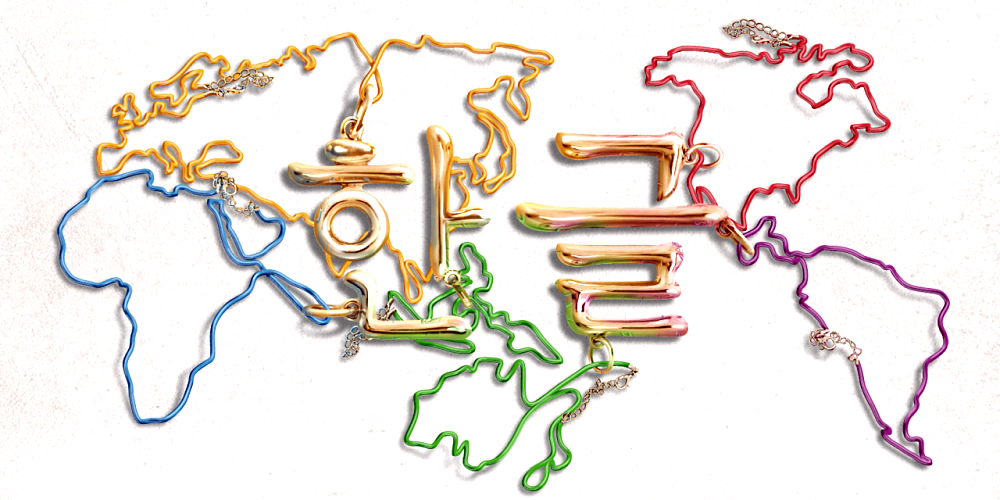
The Modern Language Association recently released its survey of second language enrolment at US universities as of the fall 2021 semester.
Founded in 1883, the MLA is the most prominent organisation of college and university second language educators in the county.
The survey has been conducted every three or four years since 1958 and offers a window into the state of second language education in the US.
The most notable change in the latest survey is the rise of Korean.
For the first time ever, Korean cracked the top 10, and was, by far, the fastest growing language among the most taught languages.
American Sign Language, which ranked third in popularity, rose slightly, but Korean jumped 38 percent.
All other leading languages declined, including well-established ones such as Spanish and French, while German declined by 34 percent.
Among East Asian languages, Japanese, which ranked fourth, was down 5 percent and Mandarin Chinese, which ranked sixth, was down 14 percent.
The declines in most languages reflect a waning of interest in second languages in the US.
Total enrolment in all second languages at colleges and universities peaked in 2009 and has been falling ever since.
Between 2016 and 2021, it dropped by 16 percent, which is greater than the 9 percent decline in the previous period.
What, then, explains the surge in interest in Korean amid an accelerating decline in language learning?
A look at the changes in Korean language enrolment since the first survey in 1958 provides an answer.
In 1958, there were only 26 students studying Korean in US colleges and universities. This number increased to 182 in 1963 but dropped to only 87 students in 1974.
Beginning in the late 1960s, many universities eliminated second language requirements, resulting in an overall drop in second language enrolment.
It was not until the 1980s that the number of students studying Korean began to increase significantly.
Between 1980 and 1990, the number jumped from 365 to 2,375. During this decade, democratisation and economic growth were in the news, and South Korea successfully hosted the 1988 Olympic Games in Seoul.
Korean immigration to the US increased during this period, which helped raise awareness of Korea as its image began to improve.
In the 1990s, the number of students more than doubled, topping 5,000 for the first time.
While the 2000s saw a decline in overall second language enrolment, Korean continued to grow.
The big surge began in the late 2000s. In 2009, 8,449 students were studying Korean, and that grew to 13,912 in 2016, before jumping to 20,000 in the 2021 survey.
The surge in the 2010s turned Korean into a “major language” on US university campuses for the first time.
Much of the boom in Korean language learning during the past 15 years comes from the popularity of K-pop.
The Korean Wave of the 2000s centred on Asia, and universities in the region saw an increase in the number of students learning Korean.
As K-pop swept the world, including the United States, the number of students interested in learning Korean skyrocketed around the world.
But it’s more than just K-pop. At the turn of the 21st century, South Korea became known as an internet powerhouse, and since the 2010s, it has become known for its high-tech developments, including smartphones, gaming, and virtual reality.
Interest in the Korean language has grown with the country’s “Cool Korea” image that emerged from a combination of K-pop and high-tech.
The image has taken root around the world, including the US.
Despite South Korea’s cool image, interest in learning Korean could soon reach a plateau.
As the number of humanities majors continues to decline, the development of artificial intelligence raises questions about the need for learning second languages.
Combined with the better job prospects in STEM fields, the number of students studying second languages in the US is set to decline further.
Ultimately, the appeal of Korean is closely tied to the image of South Korea.
If its image remains positive and expands into new areas, then Korean will remain popular and could easily rise several ranks soon.
On the other hand, if the positive image begins to fray, interest in Korean will decline accordingly.
The creative and technological energy that are behind the improvement in South Korea’s image gained strength as the country transformed itself into the prosperous, forward-looking, democratic society that it is today.
Protecting and building on these achievements is therefore crucial to maintaining South Korea’s positive image.
ADVERTISEMENT
ADVERTISEMENT








































